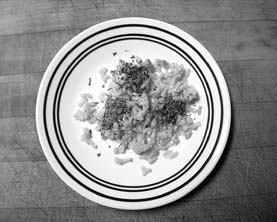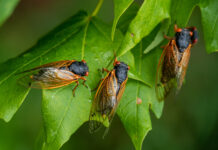“When you come to a fork in the road, take it.” –Yogi Berra Yogi’s take on giving directions is about as enlightening as the directions most herbalists try to give clients. The problem with herbalists is that, when they initially came to Yogi’s fork in the road, a good many of them chose the wrong way. Can’t say I really blame them, though. Because most herbalists are trying so desperately to pass through the gates guarded by the false gods of our newest pseudo-religion, Science, they’ve been listening only to the whispers of the deities who claim to know the “One and Only Right Way.”

Let me explain. Every practicing herbalist, early in her career, comes to Yogi’s fork in the road, and, based on her background and training, or on her desire to be among the “Enlightened and Accepted,” or on her intuitive feel for the road, she begins her path by following Yogi’s admonition and she takes one or the other of the forks. Hypothetical fork “A” Let’s trail along as our herbalist chooses fork “A.” Next to this pathway we see a brilliantly colored sign that looks suspiciously like a full-page drug company ad seen in any peer-reviewed veterinary journal. The sign says simply, “Our Way, The Only Way.” Looking down, she sees that if she chooses this path, she will walk on the flagstones marked, “Scientific Principle, The Way of Enlightenment.” Down this path she will be able to see herbs only in terms of their biochemistry. She will be led to believe that by pulverizing an herb and isolating the biochemicals it contains, she will be able to determine how it works to help her patients. If she is a devout follower – but one who thinks for herself – she may question how anyone, even a Great Deity of Science with the most powerful computer in the world, could possibly categorize the countless biochemicals contained in one herbal plant; how she could then take this array of biochemicals and analyze the many ways each of them interacts with the patient’s body (and mind! and spirit!); how she could then decide which one or two of the biochemicals were the most important to the treatment of the patient’s condition; and then, finally, how she could possibly put all this together and come up with a way to extract precisely what the patient needs and be able to give it in the correct milligrams-per-pound dosage. Where her questioning may lead her, we can only guess. We do know, though, she will encounter at least one major obstacle along her path: The Boulder of Scientific Methodology, which recognizes only double-blind studies performed in the United States as valid indicators of an herb’s efficacy. She will not be able to budge this boulder, a rock so firmly entrenched that it is actually worshipped by the Great Deities of Science. It’s much like an iceberg – there is more rock hidden than there is above ground. Being a persistent herbalist, she may dig into the dirt that surrounds the boulder. Digging there, she’ll discover that, although the Great Deities of Science would have us believe that double-blind studies (supposedly the “gold standard” of scientific methodology) were passed to us as firmament from above, they’ve really only been around since the late 1950s. If she continues to dig, she’ll discover that a double-blind study is nothing more than a form of evaluation whose purpose was supposed to remove examiner bias, though it does nothing of the sort. In fact, when put under true (unbiased) scientific scrutiny, double-blind studies actually enhance or increase examiner bias. In other words, while double-blind studies may be helpful in some instances, they give us no better evaluation of a drug’s (or herb’s) efficacy than many of the other methods of evaluations that have been used throughout history. What’s more, if our herbalist has the courage to dig further into the true underpinnings of the boulder’s foundations, she will come to the realization that the most consistent benefit of double-blind studies is that they make it easy for drug companies to make their products appear more beneficial than they really are. We can only wonder how the thinking herbalist on the “Our Way, The Only Way” path will react as she unearths this information. Hypothetical fork “B” Back at Yogi’s fork in the road, let’s follow a second herbalist as she takes the other fork. This herbalist has only a small sign to point her way. The sign, painted in green, says, “nature’s way.” On this pathway our herbalist will find that further signposts are her patient’s results, good or bad. As she becomes more experienced, she will learn which of the signposts are reliable and which are not – just by listening to her patients as they describe how they feel during and after the herbal treatments . . . and by critically reading the accounts of millions of herbal users over many millennia. On this pathway our herbalist will constantly receive hints from the surrounding woods – hints of how the totality of the herbs are more potent than the sum of their biochemistries. The trees and plants themselves will speak to her: “Look,” they’ll say, “There is a synergistic effect among our biochemistries.” She will come to realize that herbs are safest when used whole; most herbs contain many chemicals that act bi-directionally – one chemical causing one reaction in the body; another causing the exact opposite reaction, and the two being utilized by the body as need be, to meet its present needs. Traveling a pathway through the woods and over the grassy hillsides, our second herbalist will observe firsthand this and many more of nature’s unexplainable miracles. And, as she develops her ability to observe, she will come to accept the magic of the herbal essences she uses. If she can learn to open her heart to her inner intuition, she may be able to sense and understand the teachings of the spirit of the Green Beings, the spirit that Native Americans and other indigenous peoples initially relied upon to teach them how to use the herbs correctly. While our herbalist may be extremely curious about the “scientific” workings of the herbs, she will also be aware that, using scientific logic, she may never be able to fathom all the interactions between the biochemistries of the plants and the various biochemistries and physiology of her patients. And, if she ever does come to one of the boulders of the Great Deities of Science (the double-blind study, for example), she will likely view it with curiosity . . . and simply walk around it. After all, it’s patient response that’s important, not her ability to prove how the herbs work in a manner accepted by the Great Science Deities. Where is this storyteller coming from? Now that you’ve taken both of Yogi’s “forks in the road,” you might ask, which one have I taken? Actually, when I came to the fork in the road, I respected Yogi’s advice . . . and I took both paths. Remember that I am, first of all, a twice-over scientist (DVM and Ph.D), so I am fully aware of the benefits of science and scientific methodology. However, I never accepted science as my theology, and being an observant scientist (and I hope an unbiased one to boot), I’ve come to recognize some of the shortcomings of science. First of all, there is simply too much substance to each herb to be able to measure all of it with any methodology. Accurate measurements of any herb would entail evaluating hundreds of biochemicals, each interacting with each other – then each of these interactions having myriad effects on the physical body of the patient, some of them additive or synergistic, others balancing or bi-directional in effect. To try to diminish all these chemical interactions down to one or two biochemicals that are supposedly the “active ingredients” of the herb is impossible. When we try to use a reductionistic scientific paradigm to evaluate herbs, the only folks who benefit are the drug companies who want to trademark the extracted biochemical so they can sell it at a profit. In my experience, using whole herbs rather than a concentrated amount of one or two of their extracted biochemicals results in a less pronounced (and therefore less severe) reaction in the patient (that’s a good thing!). Because the individual herb is a mix of many biochemicals (often in minute amounts), I don’t have to worry too much about such scientific things as the correct dosage of the herb in milligrams per pound. In fact, I’ve found (following the lead of many other traditional herbalists I know) that very small doses often work as well as (or even better than) a dose that would represent the “recommended dosage” according to those still following scientific dictum. Furthermore, the herbs I’ve found the most helpful are almost always the herbs that have been used by millions of people, across cultures, throughout the centuries of recorded history. These are not necessarily the herbs that have been “validated” through extensive, scientifically oriented studies, nor are they the most “media-popular” herbs of the day. On the other hand, as a scientist, I have studied the herbs with a critical eye. I know which ones have been scientifically validated and which ones have not. I know which ones have been reported to cause adverse reactions, and I know which of these adverse reactions were caused by a concentrated biochemical of the herb rather than by the whole herb. And, in my practice, I tend to be conservative in my approach: I try to recommend herbs I am comfortable with after I have observed many patients’ results, and after I have read the published literature reviews. Furthermore, I am now teaching graduate courses at a university whose focus is energetic medicine, and our students are in the process of scientifically validating much of what we have long suspected about the energetics (or the Spirit) of a variety of the “alternative” medicines, including herbs. Finally, the more I am involved with herbs and other alternative medicines, the more I realize there is definitely something more to any format of medicine than we’ll ever be able to measure. With herbs it may be the “spirit” of the herb, or it may be the intention of the practitioner, or it may be the focus of the universe through the herb, accessed by the clarity of the healer. Whatever it is, it has the capacity to create deeper and more profound healing than anything else I’ve ever been associated with. In summary: I think science is wonderful, and I know it has given us much to be thankful for. However, I don’t worship it. Nor do I worship herbs, although my association with them is much closer to a spiritual level than is my belief in science. As a practitioner with a foot in each of Yogi’s forks in the road, I try to access all the scientific know-how I can. The herbal portion of my practice has always been pretty much a “seat of the pants” herbology, following scientific principles when they apply and following the spirit of ancient and traditional herbology when that applies. And finally, I am now realizing that the more open-hearted access to Spirit and the spirit of the herbs I am able to generate, the better I am becoming as a holistic practitioner overall and a herbalist in particular. -by Randy Kidd, DVM, PH.D Dr. Randy Kidd has a DVM degree from Ohio State University and a Ph.D in Pathology/Clinical Pathology from Kansas State University. He is a past president of the American Holistic Veterinary Medical Association, and author of Dr. Kidd’s Guide to Herbal Dog Care and Dr. Kidd’s Guide to Herbal Cat Care.






